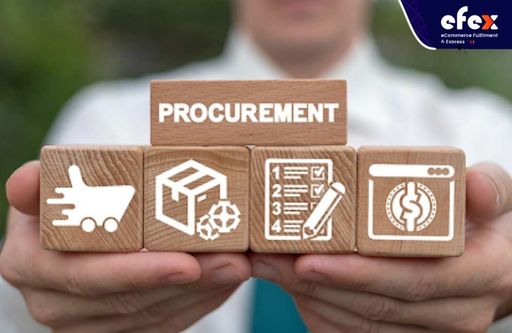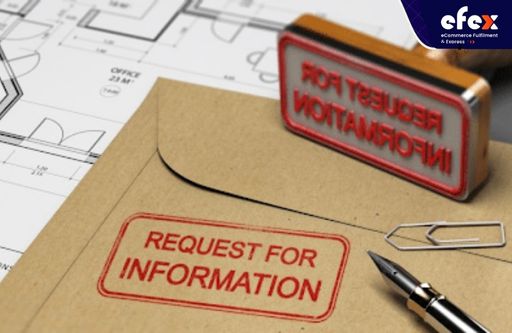
More Helpful Content
Any company's management must be skilled at acquiring the goods and services that they actually need for their activities. From the identification of a necessity until the settlement and documentation of the transaction, the procurement is made up of distinct processes.
When managing this vital process, effective control of public and corporate finances is even more crucial. The following 10 steps of procurement cycle must be taken in order to finish the procurement process.

The business requirement is first identified, then defined, as the first step in the procurement cycle. It is feasible to build a detailed specification that serves as the foundation of every effective procurement process, by including a variety of internal stakeholders.
In order to guarantee uniformity in product quality, cost, purpose, as well as practical functionality, a strong specification will include a variety of elements that have been established by different stakeholders. The company reduces the likelihood of poor procurement, which might have negative consequences on later phases of the lifecycle, by creating a high-level specification.
👉 Read More: 10 Disadvantages And Advantages Of Activity-Based Costing
An organization can do a market study after creating a comprehensive specification to better build a plan that will add the greatest value. The company's procurement team can make an early evaluation of suitable suppliers by taking into account the expenditure of the company, existing positioning, and the general trends of the market.

The organization's current policies, procedures, and relationships should be taken into account while doing a market study. It is usually advisable to start with a supplier with whom the company already works if they become engaged in this current procurement process. The market study should also include the organization's typical rules and procedures, such as those relating to dealing with local vs. international suppliers.
This first market study will also shed light on the level of rivalry among possible suppliers. This is important to consider when creating a plan since it will affect how much bargaining power the company will possess with suppliers.
The business will next begin creating the paperwork needed to issue the tender and assess each offer submitted by vendors by going back to the detailed specifications that were created previously. Tender documents contain a breakdown of quantities, terms, as well as conditions that are as thorough as is practical; a service level agreement; and a more thorough description that is derived from the previous one but amended with knowledge learned from market research.
In order to identify possible suppliers with the required commercial, financial, and technical skills, as well as their interest in participating in the future tender, a pre-purchase questionnaire (or PPQ) should be established at this stage.
Making and carrying out a request for information (or RFI) can help you learn more about various partners than the preliminary PPQ at the following step of the procurement procedure. An organization can learn about the size, finances, skills, strengths, as well as weaknesses of suppliers through RFI.

All of the important organizational stakeholders should be included in this process since this understanding will then be prioritized against the company's needs. The group's shortlist of vendors to invite to tender should subsequently be provided after reviewing the RFI in light of the selection process.
The next step is to issue a formal Request to Request for Quotation (or RFQ) and Tender (or ITT) after suppliers have been chosen. Companies will also deliver the specifications and any further paperwork created to define formal company needs together with this. A crucial point to keep in mind is to additionally specify the precise timeline when the bids (or other answers) must be filed.
The evaluation and validation of the bids made by vendors is the next step in the procurement cycle. It is crucial that this procedure be organized, open, and regulated. The real evaluation will take into account a number of variables, including the pricing offered, the technical prowess and skills of different providers, the promised level of service quality, and their financial stability.
Post-tender inspections must be carried out, involving credit checks, technical audits, reference checks, product samples, and supplier visits, once the assessment has been made. Besides, post-tender negotiations are also conducted at this time, if necessary, to better explain any potential point of difficulty later on. Once a provider has been decided upon, this stage is finished.
Once the supplier has been chosen, it is time to schedule a contract that will satisfy both parties and be as detailed as possible. Such a contract should explicitly outline each party's responsibilities and include key performance indicators (or KPIs) that will guarantee that both parties get something out of the agreement and their continued partnership.

By establishing agreed-on terms and conditions and outlining the process to follow in the event that one party has a problem with the second party's adherence to the contract, the contract should help limit contractual problems. The contract will then begin to be implemented, with both parties abiding by the deadlines and guidelines that will guarantee compliance with its terms and conditions.
Managing the reception of products and making sure that warehouse logistics are set up in a way that will expedite the processing of recently acquired items are the next steps an organization will take as a phase inside the procurement lifecycle. This includes order scheduling, processing, controlling delivery frequency, managing product categorization, and coding, structure, and space issues. The ultimate objective is to simplify and maximize the effectiveness of the reception process.
Organizations must routinely assess how the new contract is doing in relation to the KPIs specified in it. The two evaluations should be followed by a study and analysis of any problems that may have emerged, as well as talks and plans for future contractual and vendor relationship improvement.
Organizations will devote the right amount of time and effort to supplier relationship management (or SRM) in accordance with the size, scope, duration, and likelihood of future engagement with the supplier.

The above-mentioned contract evaluations and discussions with the supplier will be part of this, and they will assist the two sides to establish a solid working relationship. Process streamlining and identifying opportunities for increased business might result in an even stronger partnership that will benefit both sides.
👉 Read More: Difference Between Traditional Costing And Activity-Based Costing
👉 Read More: Activity-Based Costing Calculation With Example
👉 Read More: Procurement Process Flow: Effective Flow And Benefit
Understanding the procurement lifecycle is crucial for any business since it will provide them better insights into each step and the effectiveness of their process as a whole. Thanks to the 10 steps of the procurement cycle, the procurement procedure will potentially benefit from future updates and enhancements. Hope you have a good time with EFEX


